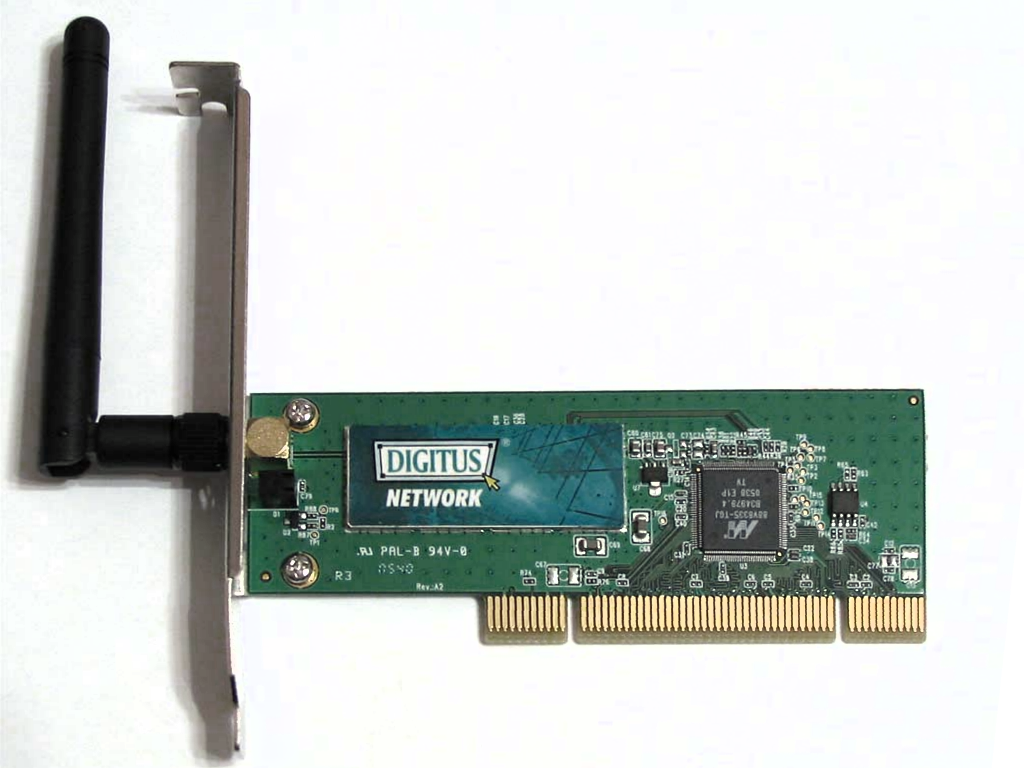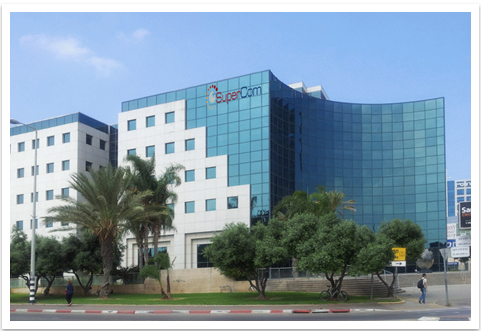|
HIPERLAN
HiperLAN (High Performance Radio LAN) is a wireless LAN standard. It is a European alternative for the IEEE 802.11 standards. It is defined by the European Telecommunications Standards Institute (ETSI). In ETSI the standards are defined by the BRAN project (Broadband Radio Access Networks). The HiperLAN standard family has four different versions. HiperLAN/1 Planning for the first version of the standard, called HiperLAN/1, started 1992, when planning of 802.11 was already going on. The goal of the HiperLAN was the high data rate, higher than 802.11. The standard was approved in 1997. The functional specification is EN300652, the rest is in ETS300836. The standard covers the physical layer and the media access control part of the data link layer like 802.11. There is a new sublayer called Channel Access and Control sublayer (CAC). This sublayer deals with the access requests to the channels. The accomplishing of the request is dependent on the usage of the channel and the prio ... [...More Info...] [...Related Items...] OR: [Wikipedia] [Google] [Baidu] |
Dynamic TDMA
Time-division multiple access (TDMA) is a channel access method for shared-medium networks. It allows several users to share the same frequency channel by dividing the signal into different time slots. The users transmit in rapid succession, one after the other, each using its own time slot. This allows multiple stations to share the same transmission medium (e.g. radio frequency channel) while using only a part of its channel capacity. Dynamic TDMA is a TDMA variant that dynamically reserves a variable number of time slots in each frame to variable bit-rate data streams, based on the traffic demand of each data stream. TDMA is used in digital 2G cellular systems such as Global System for Mobile Communications (GSM), IS-136, Personal Digital Cellular (PDC) and iDEN, in the Maritime Automatic Identification System, and in the Digital Enhanced Cordless Telecommunications (DECT) standard for portable phones. TDMA was first used in satellite communication systems by Western U ... [...More Info...] [...Related Items...] OR: [Wikipedia] [Google] [Baidu] |
Orthogonal Frequency-division Multiplexing
In telecommunications, orthogonal frequency-division multiplexing (OFDM) is a type of digital transmission used in digital modulation for encoding digital (binary) data on multiple carrier frequencies. OFDM has developed into a popular scheme for wideband digital communication, used in applications such as digital television and audio broadcasting, DSL internet access, wireless networks, power line networks, and 4G/ 5G mobile communications. OFDM is a frequency-division multiplexing (FDM) scheme that was introduced by Robert W. Chang of Bell Labs in 1966. In OFDM, the incoming bitstream representing the data to be sent is divided into multiple streams. Multiple closely spaced orthogonal subcarrier signals with overlapping spectra are transmitted, with each carrier modulated with bits from the incoming stream so multiple bits are being transmitted in parallel. [...More Info...] [...Related Items...] OR: [Wikipedia] [Google] [Baidu] |
Wireless LAN
A wireless LAN (WLAN) is a wireless computer network that links two or more devices using wireless communication to form a local area network (LAN) within a limited area such as a home, school, computer laboratory, campus, or office building. This gives users the ability to move around within the area and remain connected to the network. Through a Gateway (telecommunications), gateway, a WLAN can also provide a connection to the wider Internet. Wireless LANs based on the IEEE 802.11 standards are the most widely used computer networks in the world. These are commonly called Wi-Fi, which is a trademark belonging to the Wi-Fi Alliance. They are used for home and small office networks that link together laptop computers, printer (computing), printers, smartphones, Web TVs and gaming devices through a Wireless router, wireless network router, which in turn may link them to the Internet. Hotspot (Wi-Fi), Hotspots provided by routers at restaurants, coffee shops, hotels, libraries, ... [...More Info...] [...Related Items...] OR: [Wikipedia] [Google] [Baidu] |
Internet Protocol
The Internet Protocol (IP) is the network layer communications protocol in the Internet protocol suite for relaying datagrams across network boundaries. Its routing function enables internetworking, and essentially establishes the Internet. IP has the task of delivering Packet (information technology), packets from the source Host (network), host to the destination host solely based on the IP addresses in the packet Header (computing), headers. For this purpose, IP defines packet structures that encapsulation (networking), encapsulate the data to be delivered. It also defines addressing methods that are used to label the datagram with source and destination information. IP was the connectionless datagram service in the original ''Transmission Control Program'' introduced by Vint Cerf and Bob Kahn in 1974, which was complemented by a connection-oriented service that became the basis for the Transmission Control Protocol (TCP). The Internet protocol suite is therefore often referre ... [...More Info...] [...Related Items...] OR: [Wikipedia] [Google] [Baidu] |
Alvarion
Alvarion Technologies Ltd. is a global provider of autonomous Wi-Fi networks designed with self-organizing capabilities for carrier-grade Wi-Fi, enterprise connectivity, smart city planning, smart hospitality, connected campuses, and connected events. History Alvarion was originally incorporated as BreezeCOM Ltd. in September 1992. In March 2000, BreezeCOM had an initial public offering, selling 5 million shares of its common stock at a price of $20 per share. BreezeCOM's shares were listed on the NASDAQ under the symbol BRZE. In August 2001, BreezeCOM merged with another Israeli company, Floware Wireless Systems Ltd. (NASDAQ: FLRE), which was founded in 1993, changing its name to Alvarion. In April 2003, Alvarion acquired InnoWave ECI Wireless Systems Ltd, from ECI Telecom. In July 2003, Alvarion signed a strategic partnership agreement with Intel to co-develop WiMAX based Broadband wireless access systems, using Intel's WiMAX chips. In December 2004, Alvarion acquired i ... [...More Info...] [...Related Items...] OR: [Wikipedia] [Google] [Baidu] |
Authenticate
Authentication (from ''authentikos'', "real, genuine", from αὐθέντης ''authentes'', "author") is the act of proving an assertion, such as the identity of a computer system user. In contrast with identification, the act of indicating a person or thing's identity, authentication is the process of verifying that identity. Authentication is relevant to multiple fields. In art, antiques, and anthropology, a common problem is verifying that a given artifact was produced by a certain person, or in a certain place (i.e. to assert that it is not counterfeit), or in a given period of history (e.g. by determining the age via carbon dating). In computer science, verifying a user's identity is often required to allow access to confidential data or systems. It might involve validating personal identity documents. In art, antiques and anthropology Authentication can be considered to be of three types: The ''first'' type of authentication is accepting proof of identity given by ... [...More Info...] [...Related Items...] OR: [Wikipedia] [Google] [Baidu] |
Wireless Access Point
In Computer networking device, computer networking, a wireless access point (WAP) (also just access point (AP)) is a networking hardware device that allows other Wi-Fi devices to connect to a wired network or wireless network. As a standalone device, the AP may have a wired or wireless connection to a Network switch, switch or Router (computing), router, but in a wireless router it can also be an integral component of the networking device itself. A WAP and AP is differentiated from a Wi-Fi hotspot, hotspot, which can be a physical location or digital location where Wi-Fi or WAP access is available. Connections An AP connects directly to a wired local area network, local local area network, area network, typically Ethernet, and the AP then provides wireless connections using wireless LAN technology, typically Wi-Fi, for other devices to use that wired connection. APs support the connection of multiple wireless devices through their one wired connection. Wireless data standa ... [...More Info...] [...Related Items...] OR: [Wikipedia] [Google] [Baidu] |
Triple DES
In cryptography, Triple DES (3DES or TDES), officially the Triple Data Encryption Algorithm (TDEA or Triple DEA), is a symmetric-key block cipher, which applies the DES cipher algorithm three times to each data block. The 56-bit key of the Data Encryption Standard (DES) is no longer considered adequate in the face of modern cryptanalytic techniques and supercomputing power; Triple DES increases the effective security to 112 bits. A CVE released in 2016, CVE-2016-2183', disclosed a major security vulnerability in the DES and 3DES encryption algorithms. This CVE, combined with the inadequate key size of 3DES, led to NIST deprecating 3DES in 2019 and disallowing all uses (except processing already encrypted data) by the end of 2023. It has been replaced with the more secure, more robust AES. While US government and industry standards abbreviate the algorithm's name as TDES (Triple DES) and TDEA (Triple Data Encryption Algorithm), RFC 1851 referred to it as 3DES from the tim ... [...More Info...] [...Related Items...] OR: [Wikipedia] [Google] [Baidu] |
Data Encryption Standard
The Data Encryption Standard (DES ) is a symmetric-key algorithm for the encryption of digital data. Although its short key length of 56 bits makes it too insecure for modern applications, it has been highly influential in the advancement of cryptography. Developed in the early 1970s at IBM and based on an earlier design by Horst Feistel, the algorithm was submitted to the National Bureau of Standards (NBS) following the agency's invitation to propose a candidate for the protection of sensitive, unclassified electronic government data. In 1976, after consultation with the National Security Agency (NSA), the NBS selected a slightly modified version (strengthened against differential cryptanalysis, but weakened against brute-force attacks), which was published as an official Federal Information Processing Standard (FIPS) for the United States in 1977. The publication of an NSA-approved encryption standard led to its quick international adoption and widespread academic scrutiny. C ... [...More Info...] [...Related Items...] OR: [Wikipedia] [Google] [Baidu] |
64QAM
Quadrature amplitude modulation (QAM) is the name of a family of digital modulation methods and a related family of analog modulation methods widely used in modern telecommunications to transmit information. It conveys two analog message signals, or two digital bit streams, by changing (''modulating'') the amplitudes of two carrier waves, using the amplitude-shift keying (ASK) digital modulation scheme or amplitude modulation (AM) analog modulation scheme. The two carrier waves are of the same frequency and are out of phase with each other by 90°, a condition known as orthogonality or quadrature. The transmitted signal is created by adding the two carrier waves together. At the receiver, the two waves can be coherently separated (demodulated) because of their orthogonality. Another key property is that the modulations are low-frequency/low-bandwidth waveforms compared to the carrier frequency, which is known as the narrowband assumption. Phase modulation (analog PM) and pha ... [...More Info...] [...Related Items...] OR: [Wikipedia] [Google] [Baidu] |
Quadrature Amplitude Modulation
Quadrature amplitude modulation (QAM) is the name of a family of digital modulation methods and a related family of analog modulation methods widely used in modern telecommunications to transmit information. It conveys two analog message signals, or two digital bit streams, by changing (''modulating'') the amplitudes of two carrier waves, using the amplitude-shift keying (ASK) digital modulation scheme or amplitude modulation (AM) analog modulation scheme. The two carrier waves are of the same frequency and are out of phase with each other by 90°, a condition known as orthogonality or Quadrature phase, quadrature. The transmitted signal is created by adding the two carrier waves together. At the receiver, the two waves can be coherently separated (demodulated) because of their orthogonality. Another key property is that the modulations are low-frequency/low-bandwidth waveforms compared to the carrier frequency, which is known as the In-phase and quadrature components#Narrowband ... [...More Info...] [...Related Items...] OR: [Wikipedia] [Google] [Baidu] |
QPSK
Phase-shift keying (PSK) is a digital modulation process which conveys data by changing (modulating) the phase of a constant frequency carrier wave. The modulation is accomplished by varying the sine and cosine inputs at a precise time. It is widely used for wireless LANs, RFID and Bluetooth communication. Any digital modulation scheme uses a finite number of distinct signals to represent digital data. PSK uses a finite number of phases, each assigned a unique pattern of binary digits. Usually, each phase encodes an equal number of bits. Each pattern of bits forms the symbol that is represented by the particular phase. The demodulator, which is designed specifically for the symbol-set used by the modulator, determines the phase of the received signal and maps it back to the symbol it represents, thus recovering the original data. This requires the receiver to be able to compare the phase of the received signal to a reference signal such a system is termed coherent (and referr ... [...More Info...] [...Related Items...] OR: [Wikipedia] [Google] [Baidu] |




